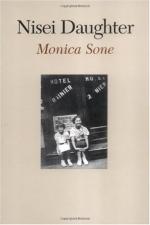|
This section contains 904 words (approx. 3 pages at 400 words per page) |

|
Japanese Immigrants in America
In 1854, the Treaty of Kanagawa, which allowed for trade with the United States, ended Japan's two hundred years of relative seclusion from foreign trading partners. Within a few decades, many Japanese had relocated to Washington, Oregon, and California to work for railroad companies and other booming industries. This influx became even greater after the Chinese Exclusion Act in 1882, which prohibited Chinese people from entering the United States. Until then, the Chinese had played an important part in the development of many industries along the West Coast.
By 1907, paralleling events with Chinese immigrants decades earlier, West Coast landowners and businessmen called for a halt on all Japanese immigration to the United States. The American and Japanese governments settled on an informal agreement, and Japan stopped issuing passports for new laborers. However, Japanese "picture brides" were still allowed to travel to America to meet their pre-arranged...
|
This section contains 904 words (approx. 3 pages at 400 words per page) |

|




